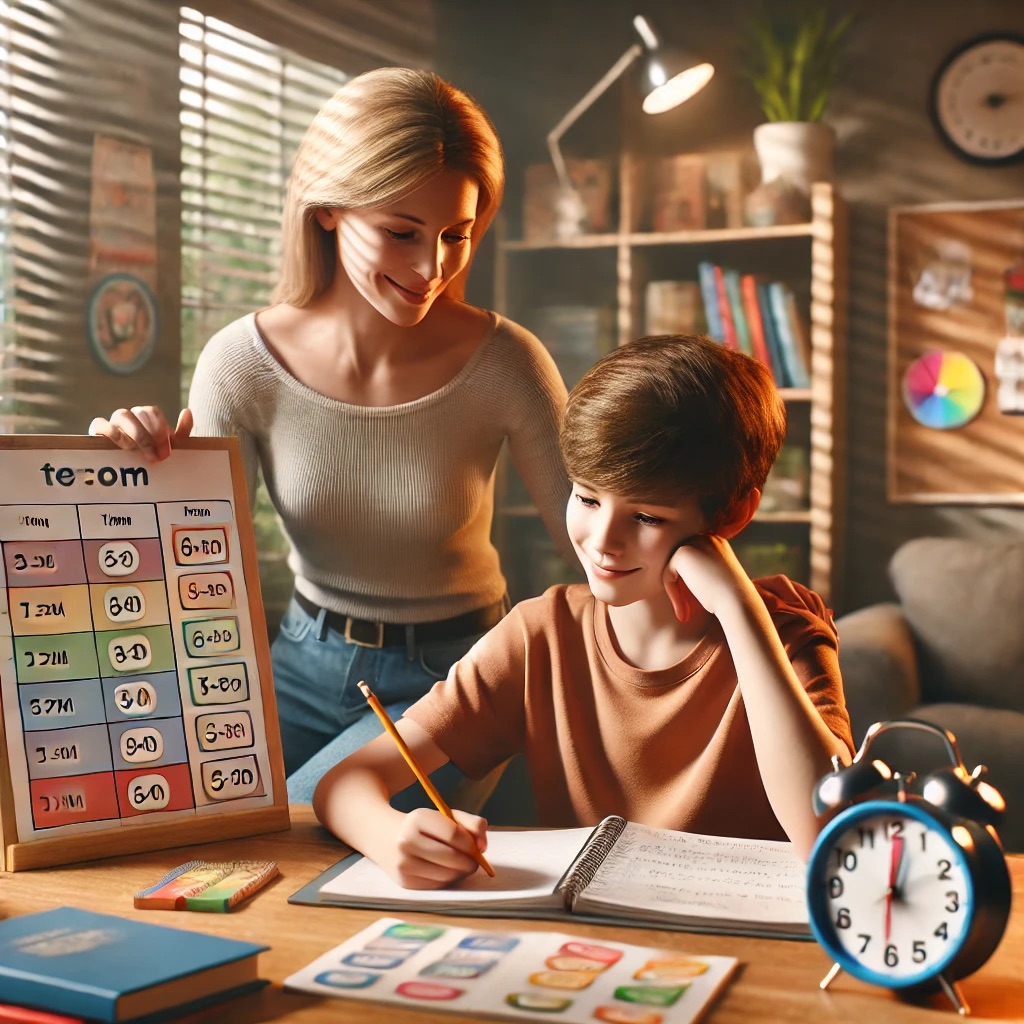Supporting Children with ADHD in Schools: Strategies for Educational Success
Attention-Deficit/Hyperactivity Disorder (ADHD) affects many children and can present challenges in educational settings, including difficulties with focus, organization, and emotional regulation. However, with proper support, schools can play a crucial role in helping children with ADHD thrive academically and socially. This article outlines evidence-based strategies that educators and administrators can implement to support children with ADHD in achieving educational success.

1. Provide Structured and Predictable Routines
Children with ADHD benefit from consistent routines that reduce uncertainty and help them focus.
• Why it works: Predictable schedules minimize distractions and promote self-regulation (Barkley, 2021).
• Implementation: Schools can use visual schedules, consistent class routines, and clear transitions between activities. Providing a daily agenda at the beginning of the day can help students anticipate tasks and prepare mentally.
2. Use Individualized Education Plans (IEPs) and 504 Plans
For students with ADHD, accommodations through IEPs or 504 Plans can address their unique needs.
• Why it works: These plans allow for tailored interventions, helping students access the curriculum effectively (DuPaul & Stoner, 2014).
• Implementation: Accommodations may include extended test time, preferential seating, or modified assignments to reduce cognitive overload.
3. Incorporate Movement Breaks
Frequent physical activity helps children with ADHD regulate their energy and improve focus.
• Why it works: Research shows that movement increases dopamine levels, enhancing attention and motivation (Halperin et al., 2020).
• Implementation: Integrate short movement breaks, such as stretching, walking, or classroom yoga, between lessons. Schools can also provide fidget tools or standing desks for students who struggle with sitting still.
4. Offer Clear and Concise Instructions
Children with ADHD often struggle with processing lengthy or complex directions.
• Why it works: Simplifying instructions reduces cognitive strain and helps students stay focused (Zentall, 2015).
• Implementation: Use step-by-step directions, written instructions, and visual aids. Check for understanding by having students repeat instructions back to the teacher.
5. Provide Positive Reinforcement
Reinforcing positive behavior can motivate students with ADHD to stay on task and meet expectations.
• Why it works: Positive reinforcement fosters a growth mindset and builds self-esteem (Millichap, 2021).
• Implementation: Use praise, reward systems, or token economies to celebrate small successes. Focus on effort and improvement rather than solely on outcomes.
6. Create an ADHD-Friendly Classroom Environment
A well-structured and minimally distracting classroom can help students stay focused.
• Why it works: Environmental adjustments reduce sensory overload and support sustained attention (Pfeiffer, 2022).
• Implementation: Use organizational tools like color-coded folders, labeled bins, and clutter-free desks. Position students away from high-traffic areas and provide quiet zones for focused work.
7. Teach Executive Function Skills
Children with ADHD often need support developing skills such as time management and organization.
• Why it works: Strengthening executive function helps students manage their workload and responsibilities (Zelazo & Lyons, 2012).
• Implementation: Introduce tools like planners, checklists, and digital calendars. Teach students to break down assignments into smaller steps and set achievable goals.
8. Foster Open Communication with Families
Collaboration with parents ensures consistency in strategies used at home and school.
• Why it works: A team-based approach improves problem-solving and creates a unified support system (DuPaul et al., 2011).
• Implementation: Schedule regular parent-teacher conferences, send home progress reports, and maintain open lines of communication via email or apps.
9. Provide Social-Emotional Support
Children with ADHD often face challenges with peer relationships and emotional regulation.
• Why it works: Social-emotional learning (SEL) programs improve self-awareness, empathy, and interpersonal skills (Elias et al., 2015).
• Implementation: Incorporate SEL lessons into the curriculum and provide access to school counselors for emotional support. Use role-playing activities to teach conflict resolution and social skills.
10. Leverage Technology
Technology can help students with ADHD stay organized and engaged in their learning.
• Why it works: Digital tools cater to diverse learning styles and help students track tasks and deadlines (Radesky et al., 2020).
• Implementation: Use apps like ClassDojo for behavior tracking, Google Calendar for scheduling, or gamified learning platforms to maintain engagement.
Schools have a vital role in supporting children with ADHD by creating inclusive environments, providing individualized accommodations, and teaching skills that foster independence. Through structured routines, positive reinforcement, and open communication with families, schools can empower children with ADHD to succeed academically and socially.
This article was written by John S. Collier, MSW, LCSW. Mr. Collier has over 25 years experience in the social work field. He currently serves as the executive Director and outpatient behavioral health therapist through Southeast Kentucky Behavioral health based out of London Kentucky. John may be reached by phone at 606-657-0532 extension 101 or by email at [email protected].
References
• Barkley, R. A. (2021). Taking Charge of ADHD: The Complete, Authoritative Guide for Parents. Guilford Press.
• DuPaul, G. J., & Stoner, G. (2014). ADHD in the Schools: Assessment and Intervention Strategies. Guilford Publications.
• DuPaul, G. J., et al. (2011). Home-school collaboration in ADHD management. School Psychology Review, 40(4), 494-512.
• Elias, M. J., et al. (2015). Promoting Social and Emotional Learning: Guidelines for Educators. ASCD.
• Halperin, J. M., et al. (2020). Physical activity intervention improves sustained attention and executive functioning in children with ADHD. Journal of Attention Disorders, 24(10), 1408-1415.
• Millichap, J. G. (2021). Attention Deficit Hyperactivity Disorder Handbook: A Physician’s Guide to ADHD. Springer.
• Pfeiffer, S. (2022). Routines for children with ADHD: Why they matter and how to build them. Psychology Today.
• Radesky, J., et al. (2020). Digital technology and ADHD: Benefits and risks. Pediatrics, 145(S2), S157-S162.
• Zentall, S. S. (2015). Environmental support for children with ADHD. Behavioral Interventions, 30(3), 153-164.
• Zelazo, P. D., & Lyons, K. E. (2012). Mindfulness training in childhood. Developmental Psychology, 48(5), 1023-1031.








